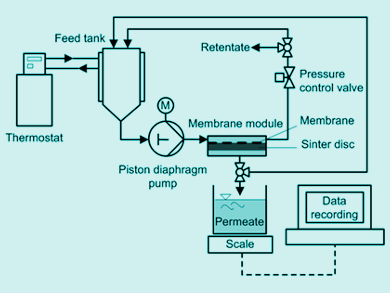Advanced technologies often require metals that are of strategic economic relevance, either due to limited availability or the finiteness of the resources. Therefore, the use of secondary sources such as low-grade ore deposits or mining residues has become increasingly important.
Biohydrometallurgy takes advantage of microorganism-mediated natural leaching processes releasing metal ions in harvestable quantities. Since it takes place under moderate conditions and no toxic additives are required, it is not only cost- and energy-efficient, but also environmentally friendly. Although established for copper extraction for quite some time, it has only recently been expanded to other metals. The resulting leaching solution needs to be selectively treated to recover even minute trace elements, e.g., by membrane separation techniques.
In a review, Arite Werner, TU Bergakademie Freiberg, and colleagues introduce the reader to the different forms of biohydrometallurgy treatments and their advantages and disadvantages. Copper, for example, is mostly recovered by heap leaching, where diluted acid is percolating through a heap of ground ores overgrown with microorganisms. This is an inexpensive, but rather lengthy process. Bioleaching of copper in stirred tank reactors additionally allows the regulation of aeration and shortens the process time.
The researchers also thoroughly discuss the characteristics of different membranes for specific separation tasks. To separate the metal ions from the leaching solution, polymer nanofiltration membranes are used since they are highly stable even in harsh conditions.
The suitability of biohydrometallurgy combined with membrane filtration processes is presented on the basis of two research projects aimed at the recovery of rare trace metals. It was shown that high concentration gradients between the valuable trace metals and the originally mined component hinder the recovery. A similar separation behavior of the trace components also makes separation difficult. Nanofiltration and pH variations can overcome these obstacles, but for a complete recovery, a combination with other separation methods might be required.
- Resource Recovery from Low-Grade Ore Deposits and Mining Residuals by Biohydrometallurgy and Membrane Technology. Potentials and Case Studies,
Arite Werner, Katja Meschke, Kevin Bohlke, Birgit Daus, Roland Haseneder, Jens-Uwe Repke,
ChemBioEng Rev. 2017.
https://doi.org/10.1002/cben.201700019




